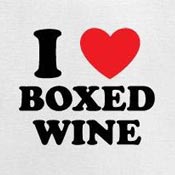
by Lorri | Jul 5, 2017 | UnCorked
Summer has a way of slowing down our busy days, making us get out and enjoy the sunshine. But enjoying wine away from the conveniences of home can pose a dilemma. Glass is generally prohibited, but even where it isn’t, say a lake house or beach rental, we are still faced with lugging around the bottle of wine, remembering to bring a corkscrew and dealing with fragile glassware.
But that doesn’t mean you have to forgo wine. There are more options than ever before when it comes to travel and outdoor friendly wines.
STACKS
Stacked single wines are new to our market and just in time for summer. Instead of packing a full bottle of wine and the glassware in your picnic basket you can have it all in one simple stack. The stack wines are a four pack of stemless shatterproof glasses of wine (187 mL each), shrink sealed together in a tower. Just snap the glasses apart, peel off the foil seal and your wine is ready to be served. No corkscrew involved and no need for glassware.
- 2017 Woodbridge by Robert Mondavi Chardonnay Stacked Singles, California (about $9 retail for stack of 4)
CANS
Canned wines may be the most underrated of my outdoor recommendations. Considering many wine drinkers are just now warming up to the idea of quality wine with screw tops, there has been some resistance to canned wine. This type of closure offers many summer benefits of being able to stay cold in coolers alongside other beverages, no corkscrew is needed, it’s lightweight for packing and the cans are easily recyclable. I think many consumers are concerned about taste. Over the past few weeks I experimented to see if my friends could taste a difference from what they would consider a nice, refreshing, inexpensive, chilled pinot grigio. I poured the can into a wine glass. The conclusion: Not one said a negative comment about the quality of the wine and, more importantly, they were shocked when I showed them the can. The only downside is once a can is opened, it can’t be resealed.
- 2017 Underwood Pinot Grigio, Oregon (about $7 retail for a 375 mL can)
BOXES
Boxes rank among my favorites not only for convenience, but also their eco-friendliness. Most of us are familiar with the 3-liter box that fits snugly in a refrigerator but more wineries are also introducing the “mini” 500 mL Tetra Paks. Most Tetra Pak cartons are made from renewable, low carbon raw materials — primarily paperboard made from wood — that require less energy to produce than traditional glass bottles.
This is a good option for summer for many reasons: no glass, light weight for picnics and camping and a plastic closure that can be screwed back on. The drawback of these smaller boxes is, unlike their 3-liter counterparts, they don’t stay airtight for weeks.
- 2017 Black Box Pinot Grigio, California (about $5 for a 500 mL box)
by Lorri | Sep 19, 2012 | UnCorked
 Despite the public’s negative reactions at the mere mention of boxed wine, one thing is undeniable: it’s a brilliant idea. Known in the industry as the bag-in-a-box, the packaging solves a common problem that troubled winemakers for centuries. Whether in an urn, cask or bottle, no matter how these are sealed, air attacks and degrades the wine, making an opened container’s life only a few days long.
Despite the public’s negative reactions at the mere mention of boxed wine, one thing is undeniable: it’s a brilliant idea. Known in the industry as the bag-in-a-box, the packaging solves a common problem that troubled winemakers for centuries. Whether in an urn, cask or bottle, no matter how these are sealed, air attacks and degrades the wine, making an opened container’s life only a few days long.
In 1965, Australian winemaker Thomas Angove was not seeking to change the image of wine but looking for a more practical and cost effective method for wine packaging. His invention evolved into today’s boxed wine. The box has a soft, flexible bag inside that is filled with wine and sealed without air. As the wine is drawn out the flexible bag collapses and protects the remaining wine from airspoilage. Placing the bag inside a box allows for space efficiency and ease of transportation.
You can’t deny it is a brilliant invention, yet image issues and the myth that boxed wine is inferior have prevented people from embracing it, much like our thoughts on screw-top wines just 10 years ago. In the early days, boxed wine concerns were founded, with an enormous amount of poor-quality wines being put into a box. But today more vintners areembracing the trend, and excellent quality boxed wines are resulting.
These are a few I have tasted and believe give the consumer a fresh new look at boxed wines.
- 2011 Lindeman’s Pinot Grigio, Australia (about $20 retail)
- 2011 Big House Red, California (about $22 retail)
- 2011 Silver Birch Sauvignon Blanc, New Zealand (about $20 retail)
- 2011 Black Box Cabernet Sauvignon, California (about $24 retail)
- 2011 Vina Borgia Garnacha, Spain (about $19 retail)
- 2011 Folonari Pinot Grigio, Italy (about $21 retail)
- 2011 Bota Box Chardonnay, California (about $20retail)
by Lorri | Apr 25, 2012 | UnCorked
 A recent Uncorked column on chardonnay had many readers sending feedback on the continued love of this grape (making me realize I may not be writing about this superstar enough). Along with various emails praising a column devoted solely to chardonnay came a flurry of requests for more values and fewer splurges. Many readers also wanted more 1.5-liter and box options for large parties and cost savings.
A recent Uncorked column on chardonnay had many readers sending feedback on the continued love of this grape (making me realize I may not be writing about this superstar enough). Along with various emails praising a column devoted solely to chardonnay came a flurry of requests for more values and fewer splurges. Many readers also wanted more 1.5-liter and box options for large parties and cost savings.
I put my palate to the test and searched our market for the best chardonnays that fit into a price range under $15 for standard bottles, boxed for $25 or less and 1.5-liters for less than $20.
VALUES UNDER $15
- 2011 Hess Collection Chardonnay, California (about $13 retail)
- 2011 Santa Rita 120 Chardonnay, Chile (about $10 retail)
- 2011 Gnarly Head Chardonnay, California (about $11 retail)
- 2011 Toad Hollow Chardonnay, California (about $15 retail)
- 2011 Root 1 Chardonnay, Chile (about $12 retail)
- 2011 Little Penguin Chardonnay, Australia (about $8 retail)
- 2011 Concannon Chardonnay, California (about $10 retail)
BOXED OPTIONS
- 2011 Pepperwood Grove, California (about $20 retail)
- 2011 Bota Box Chardonnay, California (about $19 retail)
- 2011 Black Box Chardonnay, California (about $25 retail)
- 2011 FishEye Chardonnay, California (about $16 retail)
1.5-LITER BOTTLE
- 2011 Lorval Chardonnay, France (about $12 retail)
- 2011 Lindeman’s Bin 65 Chardonnay, Australia (about $14 retail)
- 2011 Beringer Vineyards Chardonnay, California (about $18 retail)
- 2011 Columbia Crest Two Vines Chardonnay, California (about $18 retail)
by Lorri | Jun 29, 2011 | UnCorked
 Both popular and scorned in the 1970s and ’80s, boxed wines are making a comeback.
Both popular and scorned in the 1970s and ’80s, boxed wines are making a comeback.
Many still associate boxed wines with poor quality in much the same way many of us associated screw tops with cheap wine. And it’s true, an enormous amount of poor-quality wine did come in a box. But with more and more vintners embracing the concept, excellent boxed wines are showing up on the market.
No splurges this week, only exceptional values in a box. But don’t let the boxed-wine makers make you feel too guilty about drinking from a bottle — glass is recyclable, too.
- 2010 The Big House White, California (3 liters, about $19 retail)
A staple in our house, The Big House White may be one of the best white wine values in a box. The winery is located in Soledad, Calif., a mere “ankle iron’s toss” from the Soledad Correctional Facility aka “The Big House,” which explains the vibrant prison-themed labels. This year’s blend is a mix of 11 nontraditional grape varieties. Not only can the wine compete side by side with many $13 bottles, but its use of nontraditional grapes are a treat for your palate with a unique, refreshing taste.
- 2010 Three Thieves Bandit Merlot, California (1 Liter, about $7 retail)
“It’s what’s inside the bottle that counts. So, we got rid of the bottle.” Three Thieves winery is committed to bringing not only quality but also sustainability to its boxed wines. The idea came from one of the “thieves,” Charles Bieler, when traveling in Italy. He saw Italian shoppers throwing Tetra Packs of wine into shopping carts along with their other groceries. The comparison he made was that the packaging was accepted as a new way to buy milk and juice, so why not wine? The Bandit’s packaging is similar to products holding soy milk or chicken broth. The 1 liter boxes are recyclable, and you’re getting 33 percent more wine (250ml) than a traditional 750ml bottle holds.
- 2010 Bota Box Old Vine Zinfandel, California (3 Liters, about $20 retail)
For those looking to stay green, The Bota Box distinct statement, “Great Wine Shouldn’t Cost The Earth” will guide you in your purchase. They use the Tetra Pak that’s 100 percent recyclable, unbleached, post-consumer fiber printed with soy-based ink. Bota Box offers eight varietals, but the zinfandel continues to be my favorite.

 Despite the public’s negative reactions at the mere mention of boxed wine, one thing is undeniable: it’s a brilliant idea. Known in the industry as the bag-in-a-box, the packaging solves a common problem that troubled winemakers for centuries. Whether in an urn, cask or bottle, no matter how these are sealed, air attacks and degrades the wine, making an opened container’s life only a few days long.
Despite the public’s negative reactions at the mere mention of boxed wine, one thing is undeniable: it’s a brilliant idea. Known in the industry as the bag-in-a-box, the packaging solves a common problem that troubled winemakers for centuries. Whether in an urn, cask or bottle, no matter how these are sealed, air attacks and degrades the wine, making an opened container’s life only a few days long. A recent Uncorked column on chardonnay had many readers sending feedback on the continued love of this grape (making me realize I may not be writing about this superstar enough). Along with various emails praising a column devoted solely to chardonnay came a flurry of requests for more values and fewer splurges. Many readers also wanted more 1.5-liter and box options for large parties and cost savings.
A recent Uncorked column on chardonnay had many readers sending feedback on the continued love of this grape (making me realize I may not be writing about this superstar enough). Along with various emails praising a column devoted solely to chardonnay came a flurry of requests for more values and fewer splurges. Many readers also wanted more 1.5-liter and box options for large parties and cost savings. Both popular and scorned in the 1970s and ’80s, boxed wines are making a comeback.
Both popular and scorned in the 1970s and ’80s, boxed wines are making a comeback.